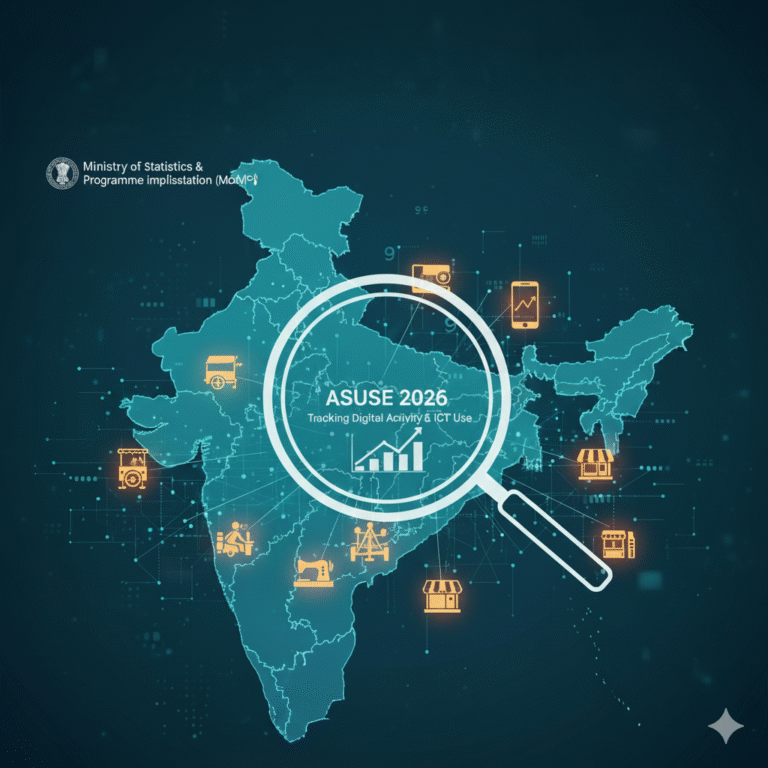Key Highlights
- The 73rd Amendment (operative from 24 April 1993) constitutionalized PRIs, mandating a three-tier system, reservations, regular elections, and State Finance and Election Commissions.
- Uttar Pradesh aligned via 1994 amendments to its 1947 Act and related laws, operationalizing Gram, Kshetra, and Zila Panchayats with five-year electoral cycles.
- Women’s reservation of at least one-third transformed representation; policy momentum led several states to adopt 50%, with central advocacy encouraging higher quotas.
- The Eleventh Schedule’s 29 subjects empowered local planning and implementation, embedding PRIs in rural development and social justice outcomes.
- Audit and oversight frameworks strengthened accountability, highlighting the importance of capacities, funds, and rule-based functioning in UP’s vast PRI network.
Uttar Pradesh has traversed a long arc from enacting the Panchayat Raj Act in 1947 to embedding a constitutionally mandated, three-tier system following the 73rd Constitutional Amendment, reorienting local governance around democratic participation and devolution. This evolution matters because it enhances grassroots accountability, broadens social inclusion—especially for women and marginalized communities—and institutionalizes planning and delivery at the village, block, and district levels. questjournals
Background:
India’s Panchayati Raj was constitutionally transformed when the 73rd Amendment (1992) came into force on 24 April 1993, adding Part IX (Articles 243–243O) and the Eleventh Schedule with 29 functional subjects for Panchayats. The amendment mandated a three-tier structure, quinquennial elections, reservations for SCs, STs, and at least one-third for women, State Election Commissions, and State Finance Commissions to secure democratic decentralization. Uttar Pradesh had a head start with the United Provinces (later UP) Panchayat Raj Act, 1947, which aimed to establish and develop local self-government in rural areas, later amended to align with the 73rd Amendment. UP operationalized a three-tier system—Gram Panchayat (village), Kshetra Panchayat (block), and Zila Panchayat (district)—via 1994 reforms and existing 1961 legislation for intermediate and district levels. Nationally, women’s reservation at not less than one-third catalyzed participation; many states later raised it to 50%, with central policy advocacy encouraging such enhancements. indiacode
Key anchors:
- Part IX (Articles 243–243O) and Eleventh Schedule: Constitutional framework for PRIs. india.gov
- 24 April 1993: 73rd Amendment commenced nationwide.
- UP Panchayat Raj Act, 1947: Foundational state legislation for rural local self-government. panchayatiraj
- UP’s 1994 amendments: Three-tier system aligned to constitutional devolution and regular elections.
The Constitutional Turn and UP’s Alignment
The 73rd Amendment mandated structural and process reforms—Gram Sabha empowerment, tiered Panchayats, reservations, tenure security, and institutional finance and election mechanisms—shifting PRIs into the justiciable core of governance. UP integrated these mandates by amending its Panchayat Raj Act in 1994 and harmonizing with the UP Kshetra Panchayat and Zila Panchayat Adhiniyam, 1961, thus formalizing Gram, Kshetra, and Zila tiers with periodic elections every five years. This ensured a uniform three-tier architecture across the state, with defined membership, territorial constituencies, and corporate status for Gram Panchayats that enabled program implementation and local administration.
- Gram Panchayat composition scaled with population (e.g., 9–15 members plus Pradhan), ensuring equitable territorial representation through constituencies.
- State-level oversight institutionalized regular elections and accountability cycles through dedicated constitutional bodies.
Women’s Political Empowerment and Social Inclusion
The 73rd Amendment mandated not less than one-third reservation for women (including within seats reserved for SCs/STs), dramatically expanding women’s representation in rural governance and altering power dynamics at the grassroots. Policy discourse and central advocacy later pushed for enhancing women’s reservation to 50%, a reform adopted by several states and encouraged nationally; UP’s framework influenced adjoining Uttarakhand’s enactments, which recognized up to 50% reservation in PRIs. The legal phrasing “not less than” often elevates effective women’s seat share beyond 33% in practice, due to rounding within small bodies and rotational allotment across constituencies. Evidence from training programs and subsequent elections underscores a steady mainstreaming of women leaders across Panchayat tiers, elevating community priorities like health, water, and education.
- Reservation mechanics: one-third minimum for women; rotational allotment; inclusion within SC/ST quotas.
- Policy trajectory: multiple states at 50%; central advocacy to standardize higher reservation to deepen empowerment.
Functional Devolution and the Eleventh Schedule
By inserting the Eleventh Schedule, the Constitution identified 29 subjects—including agriculture, minor irrigation, roads, drinking water, health, sanitation, and poverty alleviation—meant for devolution to Panchayats, with states to legislate detailed transfers. UP’s reforms post-1994 distributed responsibilities across Gram, Kshetra, and Zila levels, with Gram Sabhas central to participatory planning, and institutional finance mechanisms guided by State Finance Commission recommendations and scheme-linked fund flows. The design emphasizes economic development and social justice functions, laying the groundwork for Gram Panchayat Development Plans (GPDPs) and convergence with centrally sponsored schemes.
- Three-tier roles: village-level service delivery and records; block-level technical coordination; district-level planning and inter-block integration.
- Financial architecture: State Finance Commissions and regular elections under constitutional mandate to stabilize operations and accountability.
Institutional Mechanisms: Elections, Tenure, and Oversight
The amendment guarantees five-year tenure for PRIs unless dissolved earlier, with elections conducted under an independent State Election Commission, ensuring periodic democratic renewal. UP’s statutory framework adopted these safeguards, scheduling regular Panchayat elections and aligning disqualification, delimitation, and membership norms to transparent rules. Corporate status of Gram Panchayats facilitates property holding, contracting, and program management essential for development execution. Audit oversight and technical inspections—such as those reported by constitutional authorities—track functionality, accountability, and financial reporting to tighten governance outcomes.
- Regular five-year cycles: continuity of local governance and policy execution.
- Audit and reporting: standardized oversight across tiers to improve performance.
Early Institutional Roots in UP
UP’s Panchayat Raj Act of 1947 predated constitutional devolution, setting the objective “to establish and develop local self-government in rural areas,” which later eased the state’s transition to the 73rd Amendment structure. The act’s evolution through multiple amendments reflects adaption to changing demographics, administrative needs, and legal harmonization with national mandates. This long institutional memory helped UP scale tiered Panchayats, conduct periodic elections, and stabilize rural administration mechanisms across India’s most populous state.
Implications & Relevance
- Governance and Policy: Constitutional devolution and UP’s alignment created clear lines of accountability at the local level, institutionalizing Gram Sabhas, regular elections, and financial frameworks that enhance responsiveness in service delivery and planning.
- Economy and Development: With PRI roles spanning 29 Eleventh Schedule subjects, local bodies in UP became integral to rural infrastructure, livelihoods, and social sector outcomes via converged planning and scheme implementation.
- Social Inclusion: Reservations for women and SC/STs reshaped representation and decision-making, broadening participation and improving policy prioritization for marginalized groups.
- Administrative Capacity: Audit-backed oversight and codified processes strengthened transparency, though capacity-building, fund-timeliness, and deeper functional devolution remain continuous reform priorities.
Conclusion
Uttar Pradesh’s Panchayati Raj journey—from a pioneering 1947 statute to a constitutionally aligned three-tier system—shows how legal design, electoral regularity, and inclusive representation can rewire governance at scale. The combination of Eleventh Schedule functions, reservation frameworks, and audit-backed oversight has embedded local institutions in everyday development, even as capacity and devolution depth remain on the reform agenda. As priorities like water, health, livelihoods, and digital governance intensify, PRIs in UP will continue to be the frontline of responsive statecraft. Tracking future enhancements in women’s representation, fiscal devolution, and planning autonomy will be key to understanding the next phase of grassroots empowerment in the state.









+ There are no comments
Add yours